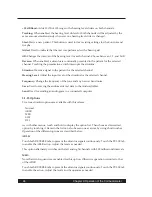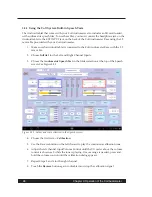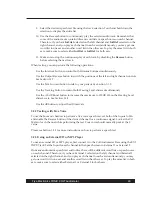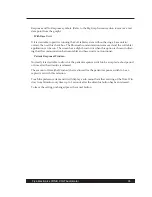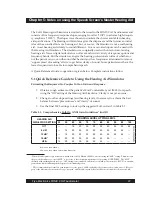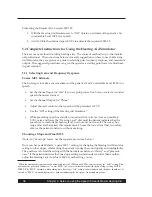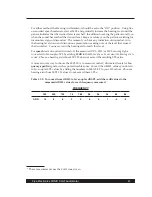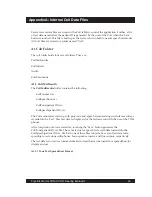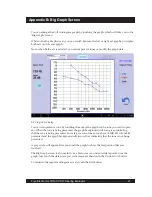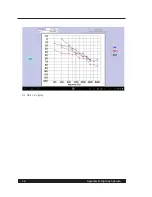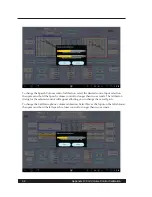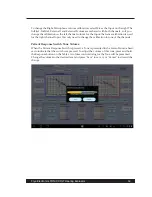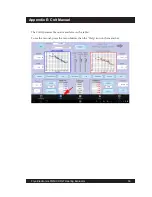
40
Chapter 5: Notes on using the Speech Screen's Master Hearing Aid
1. You will use one audiometer channel to feed unamplified sound (50 dB HL) to the test
ear and the other audiometer channel to amplify only the high frequencies. You must
use a single sound source, fed through both audiometer channels, to the same ear. Re-
corded sound sources can be used for this purpose. The possible setups are:
• A single recorded or external input (tape/CD) channel. For example, to feed the
left recorded or CD channel to the left ear, use the following settings:
Left Input to “External”
Left Output to “Phone”
Right Input to “Left External”
Right Output to “Left Channel”
• The boom microphone/headset. Use the following settings:
Both Inputs to “Mic.”
Output of the test-ear side to “Phone.”
Output of the non-test-ear side to the opposite channel.
2. On the non-test-ear side, set the Hearing Aid Simulator to “Off” and set the Hearing
Level to 50 dB HL. This passes the low and mid frequencies to the test ear, unamplified.
3. On the test-ear side, set the Hearing Aid Simulator to “HFE.”
4. Set the Hearing Level dial of the test-ear side to 30 dB HL.
5. While presenting speech materials through both channels, gradually raise the Hear-
ing Level of the test-ear-side only, until maximum clarity is achieved. This adjustment
changes the level of the high frequencies, while maintaining a constant SPL for the
lower frequencies, as Figure 5.2.1 on the next page illustrates.
NOTE: The maximum HL with this setup is lower than it is when the two channels are not
combined in this special manner. Do not use the “6dB”, “12dB”, or “18dB” settings with this
setup. Use only the “HFE” setting.
5.2.2 Selecting Maximum Output (SSPL* 90)
Selecting the SSPL 90 involves an estimate of the threshold of discomfort. The idea is to be sure
the hearing aid never crosses that threshold, and thus, will never be uncomfortable. Some pro-
fessionals like to measure the Uncomfortable Level (UCL) or Loudness Discomfort Level (LDL),
and some like to measure the Highest Comfortable Level (HCL). The main difference between
these measures is in the instructions given the patient.*
*
It is the operator’s choice as to which
method to use.
* For UCL or LDL, the patient may be asked to indicate the level at which the sound is “too loud,” or the level at which
the patient would not like to be exposed for any length of time. For HCL, the patient may be asked to indicate the level at
which one would not like to have the sound any louder—but one could tolerate that level for a minute or two. For obvious
reasons, the HCL usually is lower than the UCL or LDL. Often, a repeated measurement yields a higher level.
Содержание FONIX COLT
Страница 2: ......
Страница 4: ......
Страница 16: ......
Страница 24: ......
Страница 38: ......
Страница 42: ......
Страница 48: ......
Страница 52: ......
Страница 54: ...48 Appendix B Big Graph Screen B 2 Both Ear display...
Страница 56: ......
Страница 60: ......
Страница 62: ......
Страница 64: ......
Страница 76: ......

